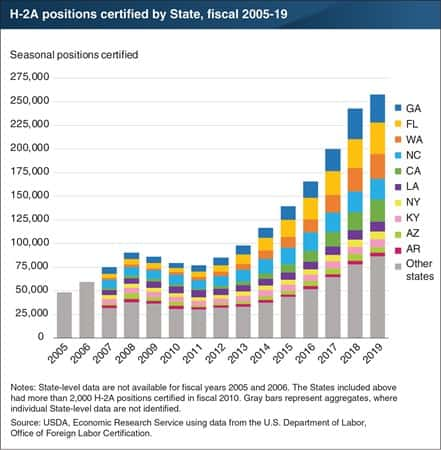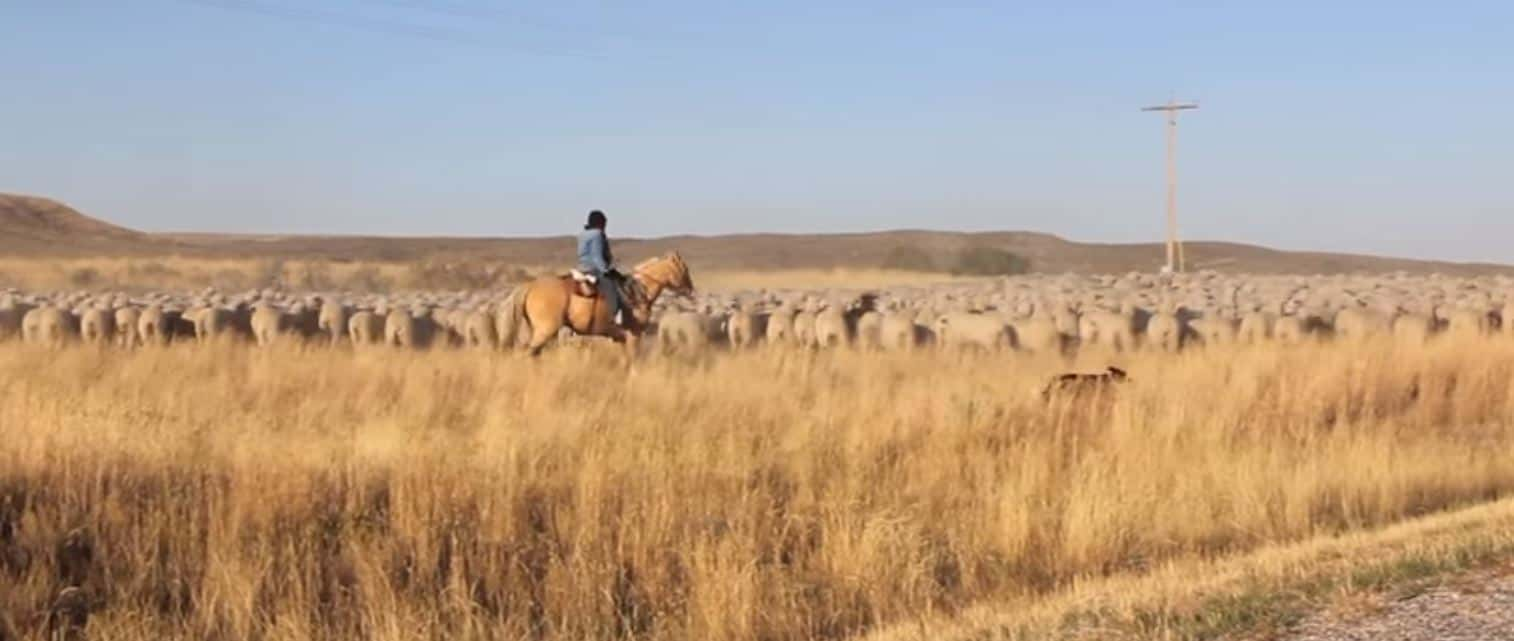The Department of Agriculture says the number of H-2A workers increased fivefold between 2005 and 2019. Calling the data an indicator of the scarcity of farm labor, USDA’s Economic Research Service says the number of H-2A positions requested and approved increased from just over 48,000 in 2005 to nearly 258,000 in 2019.
The H-2A Temporary Agricultural Program provides a legal means to bring foreign-born workers into the United States on a temporary basis. Workers employed on an H-2A visa are allowed to remain in the U.S. for up to ten months at a time. Employers must demonstrate, and the U.S. Department of Labor must certify, that efforts to recruit U.S. workers were not successful.
Employers must also pay a region-specific minimum wage, known as the Adverse Effect Wage Rate. The wage rate is set at the average wage for crop and livestock workers in that region in the prior year, as measured in USDA’s Farm Labor Survey. In addition, employers must pay for application and visa processing fees, provide housing for their H-2A workers, and pay for their domestic and international transportation.
The Economic Research Service says the average duration of an H-2A certification in 2019 was 5.3 months, implying that the 258,000 positions certified represented about 114,000 full-year workers. The impact of this year’s shelter-in-place restrictions due to COVID-19 are not reflected in USDA’s data.

Source: USDA Economic Research Service
Photo: Colorado Woolgrowers


